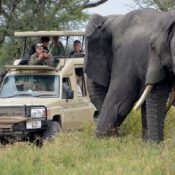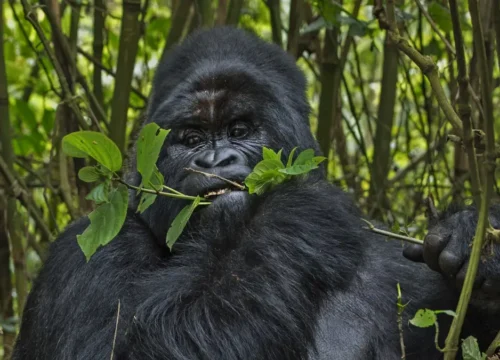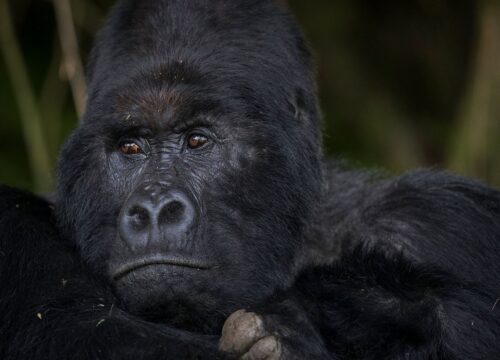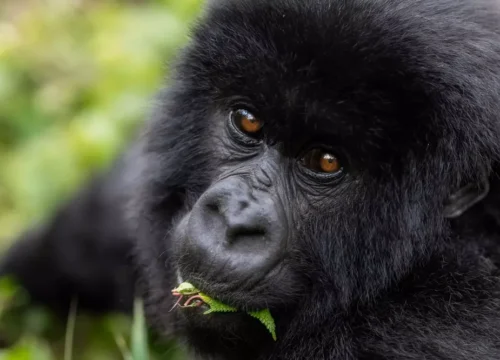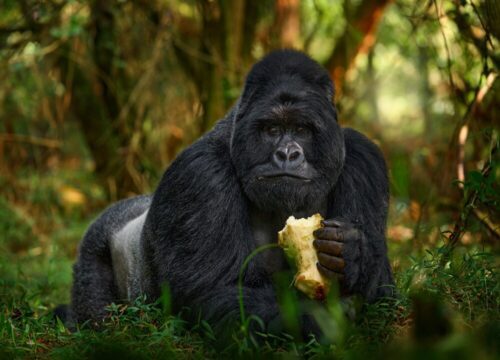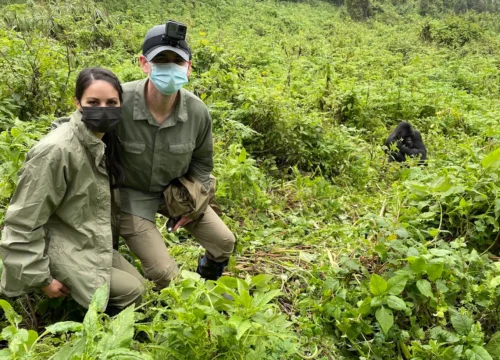Kilimanjaro and Olduvai Gorge-Tanzania

Tanzania: Location, History, Kilimanjaro and Olduvai Gorge
Reconstructed replica of the Paranthropus boisei skull found in 1959 by archaeologist Mary Leakey at
Olduvai Gorge, Tanzania.
The Olduvai Gorge, Tanzania.

Most of the known history of Tanganyika before the 19th century concerns the coastal area, although the interior has a number of important prehistoric sites. The most significant of these is the Olduvai Gorge, situated in the northwestern corner of Tanzania near the Ngorongoro crater.
In 1959, following years of excavations in the gorge with her husband, Louis Leakey, Mary Leakey discovered the near-perfect skull of the “Eastern Man” (Zinjanthropus boisei; now regarded as Paranthropus boisei, a type of australopith), who inhabited the area between 2.3 and 1.2 million years ago.
Available evidence from other archaeological sites and historical records attests to the existence of numerous major waves of in-migration onto the Tanzanian littoral over the millennia. The earliest of these likely included traders from such locales as Greece, Rome, Phoenicia, Arabia, Persia, and India, possibly beginning as early as the 5th century BCE and continuing into the next millennium
Rock formation at Olduvai Gorge, Tanzania.
Olduvai Gorge, in the Great Rift Valley, is the site of the discovery of some of the earliest known remains of human ancestry, dating back 1.75 million years. The ancient in-migration of Cushitic, Nilotic, and Bantu peoples, displacing the native San-type population, resulted in a complex agglomeration of communities practicing complementary forms of pastoral and agricultural livelihoods. Portuguese, Arab, Indian, German, and British traders and colonists later added to the mosaic.

Today Tanzania’s multiethnic and multiracial population practices a variety of traditions and customs that form a rich cultural heritage. A number of unique features located throughout the country have been recognized as UNESCO World Heritage sites for their cultural and natural value; among these are the rock-painting sites at Kondoa, the ruins of the ancient ports of Kilwa Kisiwani and Songo Mnara, and Stone Town in Zanzibar.
What is the nature Daily life and social customs of Tanzania?
The role of kin is central to Tanzanian social and recreational life. Visiting kin on joyous and sorrowful family occasions is given high priority despite the inconvenience caused by a relatively undeveloped transport system. Educated members of the extended family are frequently held responsible for the education and welfare of younger siblings.
The arts of Tanzania
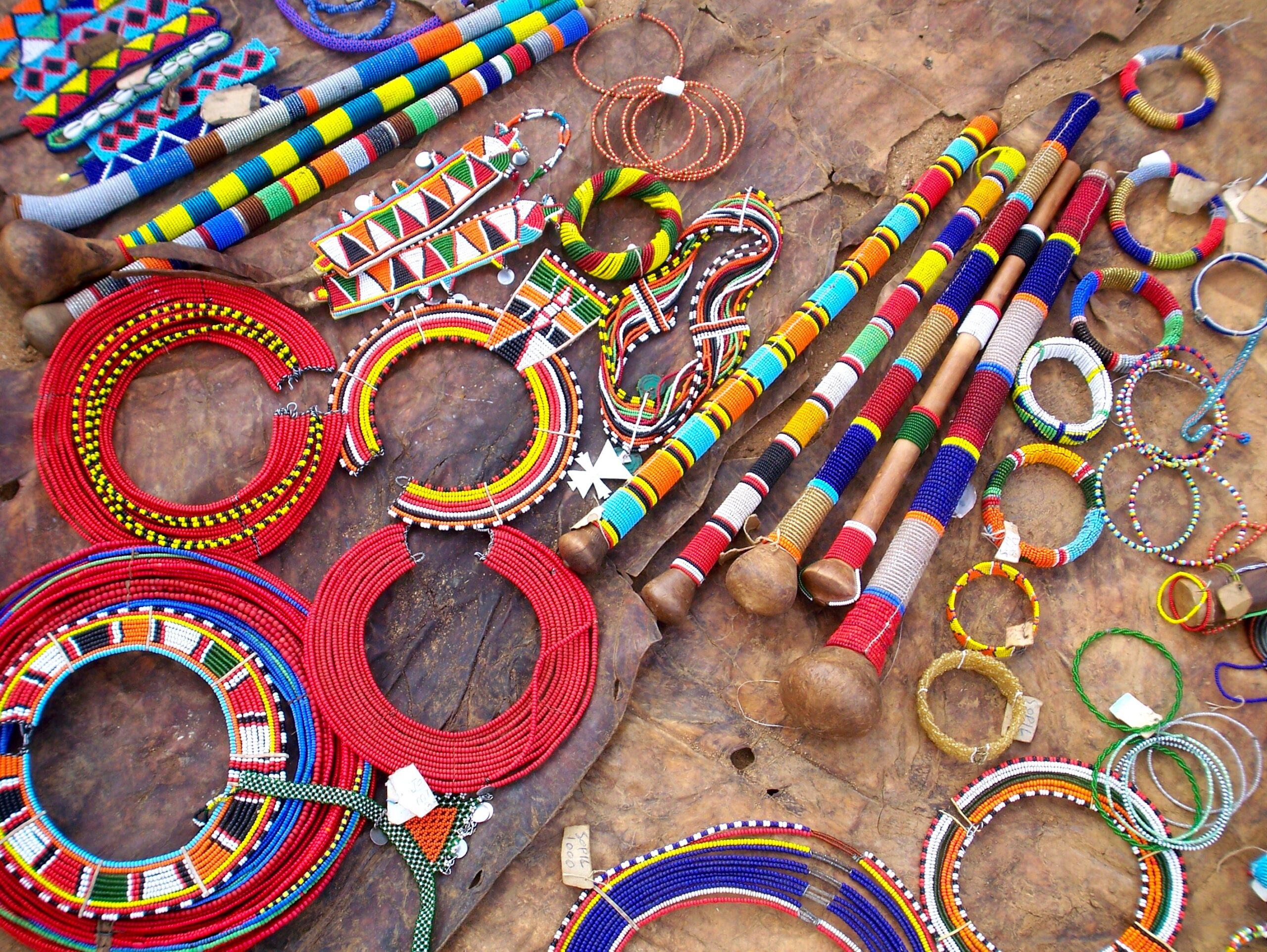
Oral storytelling traditions and tribal dancing are an important part of the cultural life of the rural population. The University of Dar es Salaam has an active theatre arts group. Makonde carvers from southern Tanzania are renowned for their abstract ebony carvings, and Zanzibar is famous for its elaborately carved doors and Arab chests. Basket weaving, pottery, and musical instrument making are prevalent in many rural areas.
Throughout the 20th century, traditional musical themes and sounds were coupled with a variety of influences to produce popular music. In the 1930s music exhibiting Cuban elements was popular; in the 1960s Congolese music, with its distinctive guitar sound and blend of Cuban and African rhythms, was favored. In the early 21st century rap and reggae emerged as choice musical genres, and mchiriku, a techno-style sound influenced by traditional rhythms, also became popular.
Are there Cultural institutions in Tanzania?
A number of Tanzania’s significant cultural institutions are concentrated in Dar es Salaam. Among these are the National Museum, which houses items excavated from the Olduvai Gorge—such as the famed Zinjanthropus boisei skull discovered by Mary Leakey in 1959—and other archaeological sites.
Branch museums include the Arusha Natural History Museum, the Arusha Declaration Museum, which contains exhibitions on Tanzania’s social and political history, and the Village Museum in Dar es Salaam, which displays traditional crafts. The national archives are also located in Dar es Salaam, as is the library affiliated with the university there. The Zanzibar Government Museum and Zanzibar’s national archives are located on Zanzibar Island.
Sports and recreation activities in Tanzania
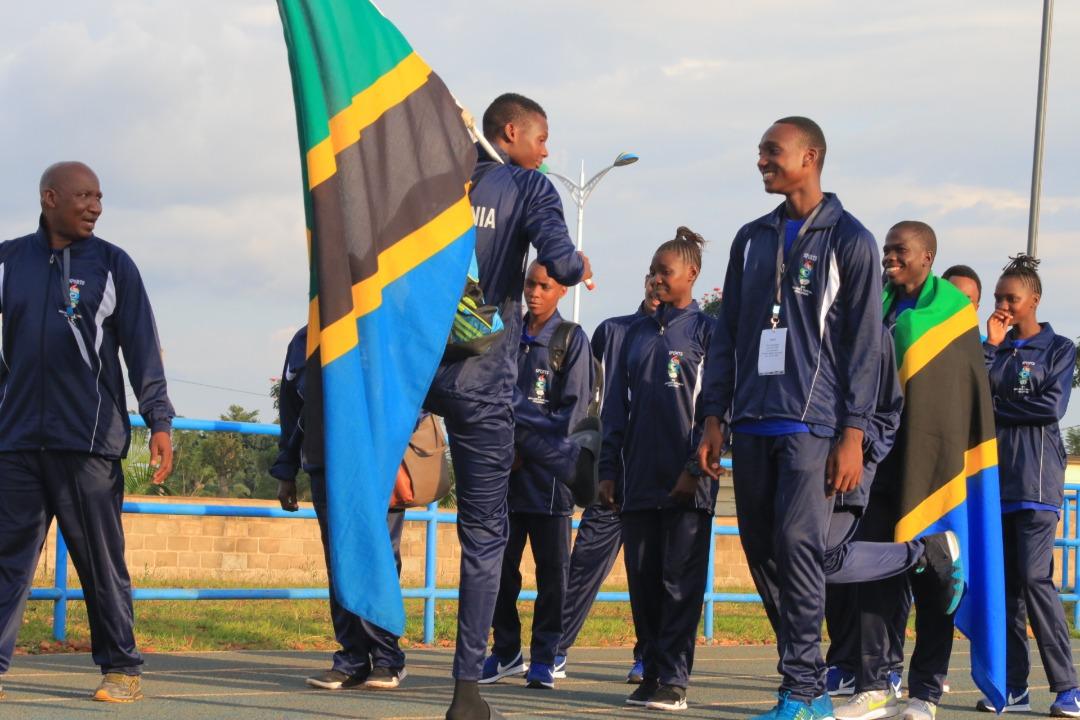
Tanzania has a highly developed system of sports education, and schools of all levels emphasize physical fitness in their curricula. Tanzanians enjoy football (soccer) as both spectators and players. The country’s Mainland League is closely followed, and cities such as Dar es Salaam and Dodoma nurse friendly rivalries on and off the field. Basketball is also popular.
Tanzania organized a national Olympic committee in 1968 and was recognized by the International Olympic Committee that year. Athletes representing Tanganyika participated in the 1964 Tokyo Games, and Tanzania made its debut at the 1968 Games in Mexico City. Although Tanzania joined the African boycott of the 1976 Montreal Games, it has consistently participated in the Summer Olympiad since that time, winning silver medals for the steeplechase and the 5,000-metre race in 1980.
The marathon is the event that has brought the country the most honor, however. Long-distance runners Zebedayo Bayo and Juma Ikangaa are national favorites.
The Establishment of Tanzania
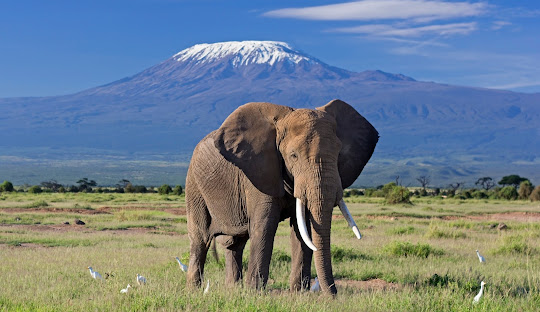
The trading contacts between Arabia and the East African coast resulted in the establishment of numerous Asian and Arab trade settlements along the coast and in the interior of what is now the Tanzania mainland. The coastal trading centers were mainly Arab-controlled, and relations between the Arabs and their African neighbors appear to have been fairly friendly.
After the arrival of the Portuguese in the late 15th century, the position of the Arabs was gradually undermined, but the Portuguese made little attempt to penetrate into the interior. They lost their foothold north of the Ruvuma River early in the 18th century as a result of an alliance between the coastal Arabs and the ruler of Muscat on the Arabian Peninsula.
This alliance remained extremely tenuous, however, until French interest in the slave trade from the Tanganyikan coastal town of Kilwa revived the trade in 1776. This attention by the French aroused the sultan of Muscat’s interest in the economic possibilities of the East African coast, and a new Omani governor was appointed at Kilwa.
For some time most of the slaves came from the Kilwa hinterland, and until the 19th century any contact between the coast and the interior was due mainly to African caravans from the interior.
In their constant search for slaves, Arab traders began to penetrate farther into the interior, particularly in the southeast toward Lake Nyasa. Farther north two merchants from India followed the tribal trade routes to reach the country of the Nyamwezi about 1825. Along this route ivory appears to have been as great an attraction as slaves, and Saʿīd ibn Sulṭān himself, after the transfer of his capital from Muscat to
Zanzibar, gave every encouragement to the Arabs to pursue these trading possibilities. From the Nyamwezi country the Arabs pressed on to Lake Tanganyika in the early 1840s. Tabora (or Kazé, as it was then called) and Ujiji, on Lake Tanganyika, became important trading centres, and a number of Arabs made their homes there.
They did not annex these territories but occasionally ejected hostile chieftains. Mirambo, an African chief who built for himself a temporary empire to the west of Tabora in the 1860s and ’70s, effectively blocked the Arab trade routes when they refused to pay him tribute. His empire was purely a personal one, however, and collapsed on his death in 1884.
Who discovered Kilimanjaro?
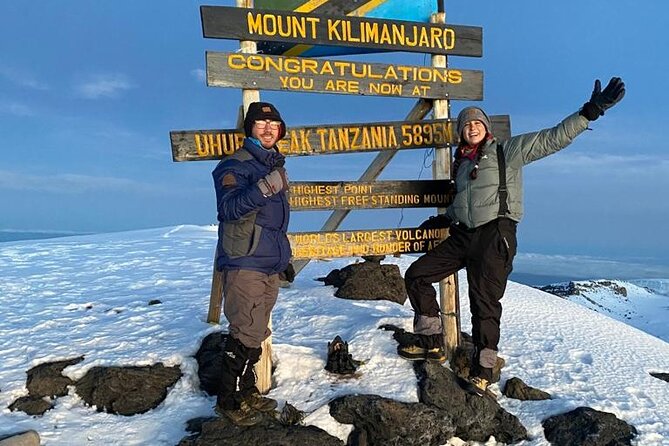
The first Europeans to show an interest in Tanganyika in the 19th century were missionaries of the Church Missionary Society, Johann Ludwig Krapf and Johannes Rebmann, who in the late 1840s reached Kilimanjaro. It was a fellow missionary, Jakob Erhardt, whose famous “slug” map (showing, on Arab information, a vast shapeless inland lake) helped stimulate the interest of the British explorers Richard Burton and John Hanging Speke.
They traveled from Bagamoyo to Lake Tanganyika in 1857–58, and Speke also saw Lake Victoria. This expedition was followed by Speke’s second journey, in 1860, in the company of J.A. Grant, to justify the former’s claim that the Nile River rose in Lake Victoria.
These primarily geographic explorations were followed by the activities of David Livingstone, who in 1866 set out on his last journey for Lake Nyasa. Livingstone’s object was to expose the horrors of the slave trade and, by opening up legitimate trade with the interior, to destroy the slave trade at its roots. Livingstone’s journey led to the later expeditions of H.M. Stanley and V.L. Cameron.
Spurred on by Livingstone’s work and example, a number of missionary societies began to take an interest in East Africa after 1860.
INQUIRE NOW
GENERAL INFORMATION ON A TANZANIA SAFARI
ENTRY REQUIREMENTS: All visitors to Tanzania must have a valid passport with at least 4 consecutive blanks pages. Any applicable visa and/or relevant documentation are the responsibility of the traveller. For further information on Visa requirements visitors are advised to contact their nearest Tanzania Embassy or Consulate.LANGUAGE:EnglishTIME: GMT +3VOLTAGE: 220 Volts/AC50Hz. Sockets are UK style, 3 pin square plugs. Power is from the government in the city/major towns and generator with inverter back up in the Safari Lodges and Camps.CURRENCY: Foreign currency must be changed at the Bank, Bureau de Change, and Hotel/Safari lodge/Camp/Resort. Major Credit Cards, Master card, Visa, American Express, are usually accepted throughout the country. Where credit cards are accepted, the payment will normally be recorded in US$ regardless of the card’s default currency.CLOTHING: Dress is mainly informal and should be comfortable as well as practical. Something warm should be brought along for early morning and evenings. Safari clothes are available from hotels/lodges/camps.BAGGAGE: Where possible, travel light. Baggage space on safari is limited to medium suitcase or soft bag per person plus reasonable amount of hand luggage. There is 15 Kilogram per person limit on all flights to the wildlife sanctuaries. Excess luggage must be stored in your arrival hotel.WATER: You will find many different of opinion of what is safe and what is not. We recommend for peace of mind, to drink local Bottled Mineral water. It is important to drink plenty of water especially during the hotter months. We would recommend that guests drink at least 2 to 3 liters of water per day to limit the effects of dehydration.HEALTH; East Africa is a safe and secure destination; however, it is a good idea to take a few precautions. Kindly consult your GP or local doctor at least 6 weeks before you travel, with regards: Malaria prophylactics. East Africa is a known malaria area and preventive measures are essential. You are advised to take one of the recommended anti-malarial drugs. Be sure to wear long sleeved shorts and trousers after sunset and spray the exposed parts of your body with a mosquito repellent spray Remember to protect yourself from direct sun rays with sunscreen cream or safari hat.DIETARY REQUIREMENTS: For those guests with specific dietary requirement, please ensure we are notified prior to travelGRATUITIES: As a guideline and dependent on how happy you are, we would suggest the following: The General Hotel/Lodge/Camp Staff – Approximately U$ 10.00 per person per day Driver Guides – Approximately US$ 15.00 to US$ 20.00 per person per day.PHOTOGRAPHY: Please be careful when photographing public buildings, airports, bridges, the national flag and people in uniform. Ensure that you have sought permission before photographing local people and their villages. If in doubt, please check with your guide.Book a Customized Safari
Read about
10 Things you Should NOT DO on an African Safari.
What to expect on a safari in Uganda.
Bwindi Impenetrable National Park
How to Choose the Best Tour Operate for Your Safari in Africa
12-Day Gorilla Tracking in Bwindi
Some of our Gorilla and wildlife Safaris
1 Day Jinja Ultimate tour Experience
1 Day White Water Rafting in Jinja
3 Days Bwindi Gorilla Habituation via Rwanda
3 Day Birding Safaris and Photography in Uganda
3 Day Safari to Queen Elizabeth National Park
3 Day fly in Gorilla Trekking Safari from Masai Mara
3 Day Grand Gorilla Trekking Safari
4 Day Chimpanzee and Gorilla Trekking Safari
Recent Posts
Last Minute Deals
Quick booking process
+49 1575 4711313



